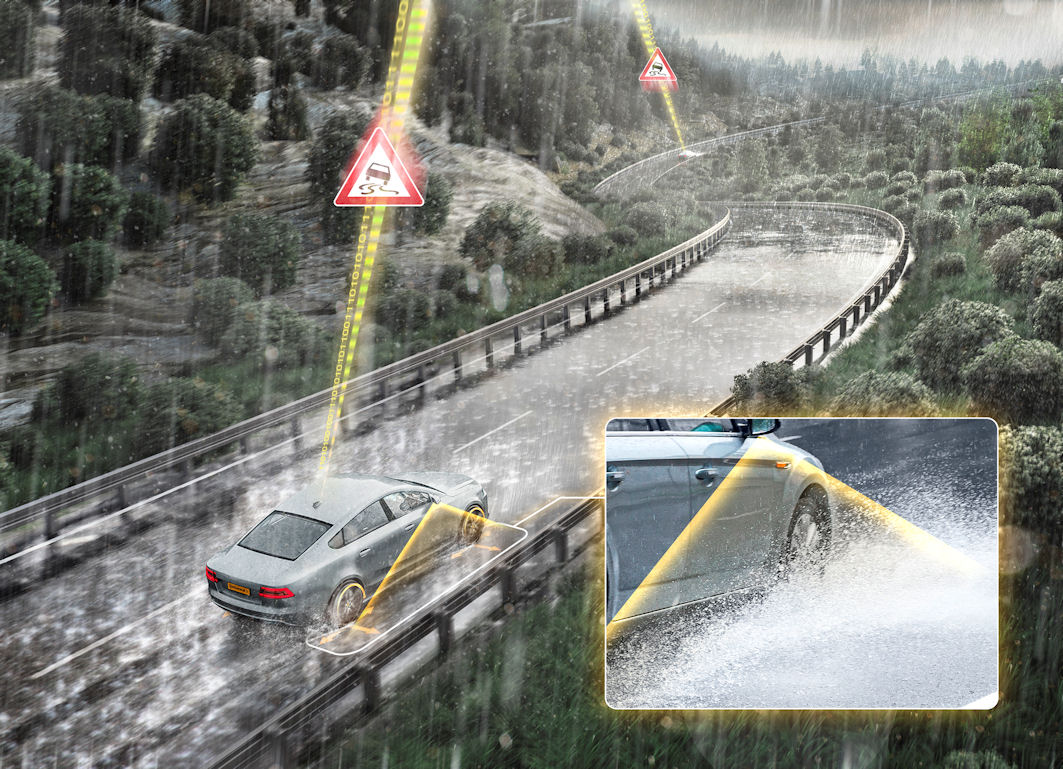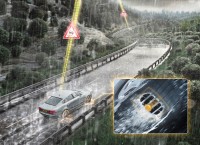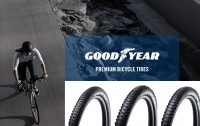Continental developing tech to combat aquaplaning
 Cameras recognise a specific splash and spray pattern from the tyres
Cameras recognise a specific splash and spray pattern from the tyres
Aquaplaning is a phenomenon we can’t avoid – or can we? Continental is confident that technology can help us do so and has shared news of solutions it is developing. These are still just concepts; however, the company believes the aquaplaning assistance technology it is now working on has the potential to intervene when aquaplaning rears its ugly head.
Continental describes its Road Condition Observer as a solution that allows road conditions to be classified with regard to tyre/road friction. The sensor-based concept functions by warning the driver in the event of imminent loss of friction caused by the presence of a thick layer of water on the road. “Our aquaplaning assistance concepts detect the early aquaplaning phase to make the driver aware of what is going on under the tyres,” comments Bernd Hartmann, head of Enhanced ADAS (Advanced Driver Assistance Systems) & Tire Interactions within the Advanced Technology department of Continental’s Chassis & Safety division.
The system under development at Continental encompasses tyres, tyre-sensors, cameras, algorithms, brake actuation and the human-machine interface. Continental’s developers are focused on predicting and managing the risk of aquaplaning by detecting situations where the front wheels may float as early as possible in order to notify the driver. Utilising signals from surround view cameras and Continental’s tyre-mounted eTIS (electronic-Tire Information System) sensors, drivers receive an early warning of approaching aquaplaning danger areas.
Continental is also working on means of stabilising a vehicle and helping maintain control when aquaplaning begins to occur, such as torque vectoring by individual wheel braking. By applying the rear brakes in a controlled way, it is hoped that vehicle manoeuvrability can be maintained to an extent.
Yet technology has its limits, and sometimes conditions in which aquaplaning might take place can’t be detected in advance. In cases where it arrives unexpectedly, Continental sees scope for technologies – such as V2X (Vehicle-to-Everything) and its own eHorizon – to act as an early warning system for other vehicles by communicating the potential risk to them. The company speaks of a “network of solidarity” being formed in which one vehicle acts as a safety sensor for all other vehicles.
Recognising aquaplaning trouble spots
Signals from eTIS warn when the risk of aquaplaning is imminent
In order to identify conditions in which aquaplaning might occur, video images from surround view cameras mounted in a vehicle’s side mirrors, grill and rear are analysed. “When there is a lot of water on the road, the camera images show a specific splash and spray pattern from the tyres that can be detected as aquaplaning in its early phase,” explains Hartmann. During testing, Continental found that the wetness recognition algorithms it used delivered a very high hit ratio in predicting potential aquaplaning conditions.
In addition to imagery, Continental uses information from tyres to detect the risk of aquaplaning. In this concept, signals from Continental’s eTIS sensors, mounted on the tyre’s inner liner, are computed. “We use the accelerometer signal from the electronic-Tire Information System to look for a specific signal pattern,” says Andreas Wolf, head of Continental’s Body & Security business unit. A tyre model processes the incoming radial acceleration of the part of the tyre in contact with the road. For wet roads – when enough water is transported out of the tyre tread to ensure an appropriate grip – the signal shows a distinct pattern. As soon as a wedge of water begins to form in front of the tyre footprint and there is excessive water on the road, the acceleration signal begins to oscillate in a characteristic way, indicating an early risk of aquaplaning. Since the eTIS sensors can also detect remaining tyre tread depth, a safe speed for a given wet road condition can be calculated and communicated to the driver.




Comments